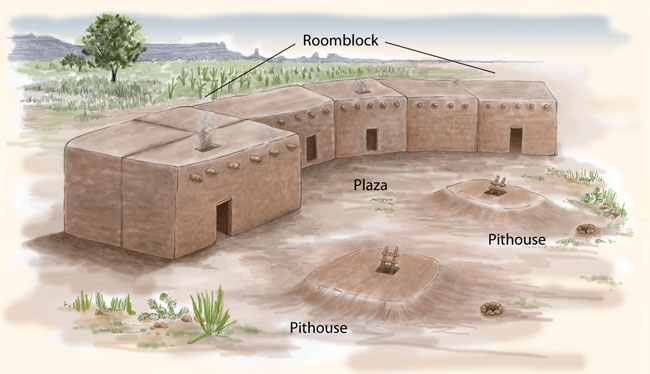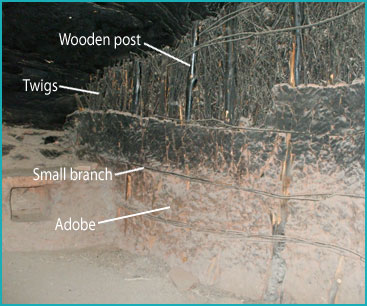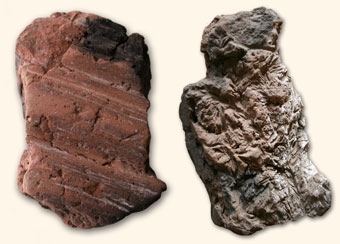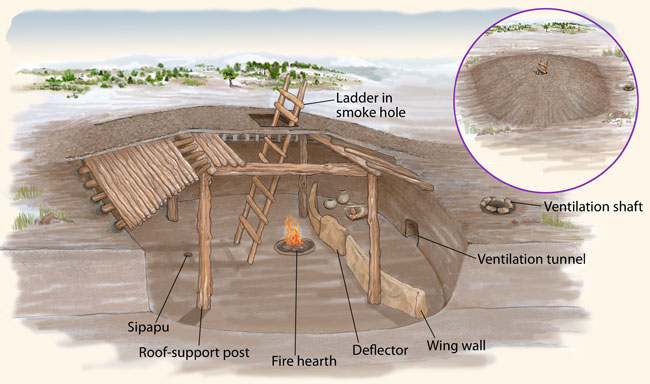Pueblo I Houses

A Pueblo I farmstead.
Pueblo I farmsteads were different than Basketmaker farmsteads. People still lived in pithouses. But for the first time they also built rows of rooms called "roomblocks." Archaeologists think people lived and worked in the roomblocks for at least part of the year. Some of the rooms were used to store dried corn and other food. Others were used for corn grinding, cooking, or other everyday activities. Roomblocks were built aboveground. Some Pueblo I roomblocks had just one row of rooms. Other roomblocks had two rows of rooms, front and back. And some, like the one shown above, had a combination. Roomblocks during this time were just one story tall. The space between the roomblock and the pithouses is called a "plaza." |

Example of a jacal wall. In places where the adobe has fallen away, How were Pueblo I roomblocks built? Roomblocks were usually made of jacal (pronounced huh-CÄL). To make a jacal wall, people would set wooden posts in the ground. Next, they would weave or tie smaller branches between the posts. The branches were used to support a layer of even-smaller twigs. Finally, the wall was sealed with a layer of adobe. Adobe is mud mixed with small pieces of plant material. |

Archaeologists often find adobe when they excavate. These photographs shows chunks of adobe from two ancient Pueblo houses. You can still see the impressions of the small branches and twigs that were part of the structure. |
So what were pithouses like during the Pueblo I period? In the drawings below, you can see what a Pueblo I pithouse looked like. The small drawing in the circle shows what the pithouse looked like from the outside, with the roof in place. In the big drawing, part of the roof and one wall have been removed so you can see inside the pithouse. The different parts of the house are labeled, including the wing wall, deflector, fire hearth, and smoke hole. 
A Pueblo I pithouse. |
Pueblo I pithouses were much deeper than pithouses built during the Basketmaker period. As the pithouses got deeper, their roofs got flatter. Also, Pueblo I pithouses didn't have antechambers. Instead, people built ventilation tunnels that allowed outside air to flow into the pithouse. Finally, starting in the Pueblo I period, people began building sipapus into the floors of their pithouses. A sipapu (pronounced SEE-pah-poo) is a very small, round pit located north of the hearth. Sipapus are thought by some Pueblo Indians to represent the hole through which humans climbed to enter this world. The presence of sipapus tells us that families may have used pithouses for rituals in addition to routine activities such as corn grinding, cooking, eating, and sleeping. For large rituals or ceremonies, people still gathered in great kivas. These large structures could hold many people from throughout the community. |
 DONATE TODAY
DONATE TODAY
